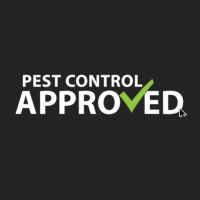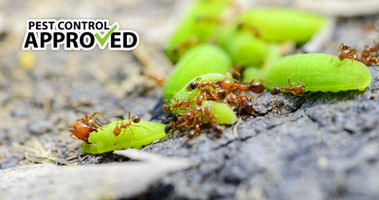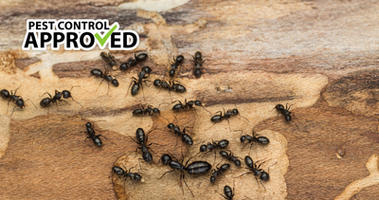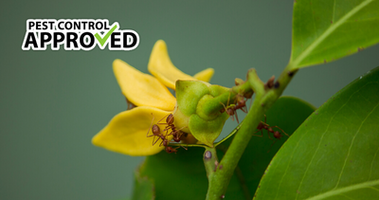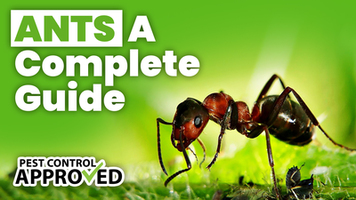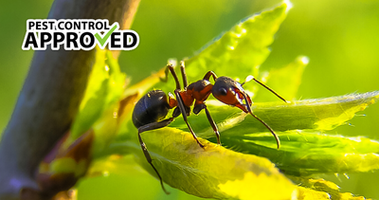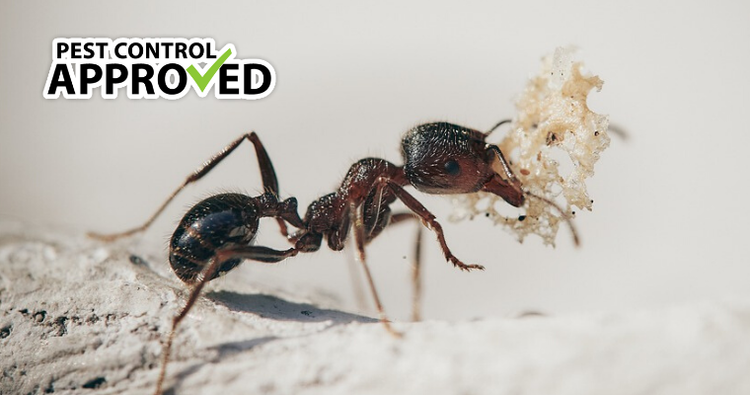
What Are Pavement Ants
Pavement ants, also called Sugar Ants, are an invasive species in Canada. They came to Canada from Europe in the early 1800’s. They are the most pervasive ant species in Canada and are frequent pests in yards and homes. Pavement ants get their name from their urban habitats: cracks in house foundations, sidewalks, and paved roads. These ants are a smaller species, about 2.4 milometers long and dark brown to black. They have pale legs and antennae. The queen and drones have wings. The worker ants are smaller and a lighter brown. Pavement ants have a small stinger but rarely use it.
Basic Pavement Ant Anatomy
Unlike mammals, they do not have a skeleton underneath their skin. Instead, their exoskeleton serves to hold their body in place and protect them. It also helps them retain water. They have a flexible abdomen and gaster (rear end) that allows them to contort themselves to sting an attacker. The ant’s three parts are segmented, allowing them to run fast and be flexible. An ant’s body is separated into three parts: head, thorax, abdomen.
The head contains segmented antennae and their eyes. Antenna are bent at almost a right angle which allows them to move in all directions. They are used for smell, touch, and communication. Pavement ants have ten antennae segments with two club portions at the end. They have compound eyes but relatively poor eyesight. They use their eyesight to detect movement, but little else. The head also contains their mandibles, or mouth parts, and strong muscles to work them. Mandibles are used to carry, cut, fight, and dig.
The thorax sits between the head and abdomen. It contains their six legs. Each leg has small claws at the end. The claws are often used to grasp food or nest materials. The front most legs are also used for cleaning and touch, much like their antennae. Near the end of the thorax are one or two pointed parts called spines.
The abdomen, or gaster, sits at the rear of the ant’s body. It contains important organs such as the heart and digestive system. It is separated from the thorax by two bumps called petioles or nodes. Pavement ants have two nodes. In some species there is only one and it is hidden underneath the abdomen. The gaster also contains the stinger, used primarily for defence. The Pavement ant has no poison or venom.
Breeding and Life Cycle
Like all ant species, pavement ant colonies consist of one or two queens, workers, and drones. Queens are the only females and their main purpose is to produce more ants. A drone’s sole purpose is to mate with the queen. Workers find food and build up the nest. In the spring or summer, the queen leaves her nest to mate. The male drones also swarm outside to seek a queen, including queens from other nests. This generally occurs in July or August. Once successfully mated, the drone dies. Young fertilized queens seek a new home while an established queen returns to her colony. The young queen prepares a small nest herself where she lays her eggs. She does not hunt for food during this time but survives off stored proteins. The queen cares for the eggs, and hatched larva until they can reach adulthood. Once they are old enough to forage, they spend to or three months caring for the queen. In an established colony, the worker ants care for the eggs and larva. The eggs are frequently moved to protect them from moisture and temperature changes. In winter, ants hibernate. Pavement ants often find a warmer place to nest in winter like under the steps or inside a home.
Pavement Ant Diet
Pavement ants are not picky eaters. They love sweet things like honey and jam. They also eat other insects, including other ants! Pavement ants are also attracted by greasy food and seeds. Basically, a pavement ant will consume whatever it can find.
Habitat
Pavement Ants prefer areas with little vegetation. Hence, they have adapted well to urban environments. They often build nests along a home’s foundation, on the side of a building, or in sidewalk cracks. Their nests can be identified by the crater-shaped mounds of sand and dirt piled near them.
Indoors, pavement ants are often found near plumbing, baseboards, or in wall insulation. Indoor nests provide them with an easy source of food, water, and shelter. Once an indoor nest is established, the ant colony is extremely hard to remove.
Are they Dangerous?
Pavement ants can bite or sting, but they are not poisonous or venomous. But they can carry bacteria such as salmonella. The bacteria can be contracted if you eat or prepare food on a contaminated surface. If you have ants inside, make sure to wipe surfaces before you prepare food.
Pavement Ant Prevention Tips:
- Repair rips in screens or mesh
- Fill cracks or gaps in windows and doors
- Keep house free of crumbs
- Brush pets when they come inside
- Store food in sealed containers
Ant Removal Options:
- Spray ant scent trails with vinegar
- Use ant bait traps indoors
- Remove outdoor colonies near windows and doors
- Use aerosolized insecticide near entry points.
You can see more information on Pavement Ants on our Complete Ant Guide

